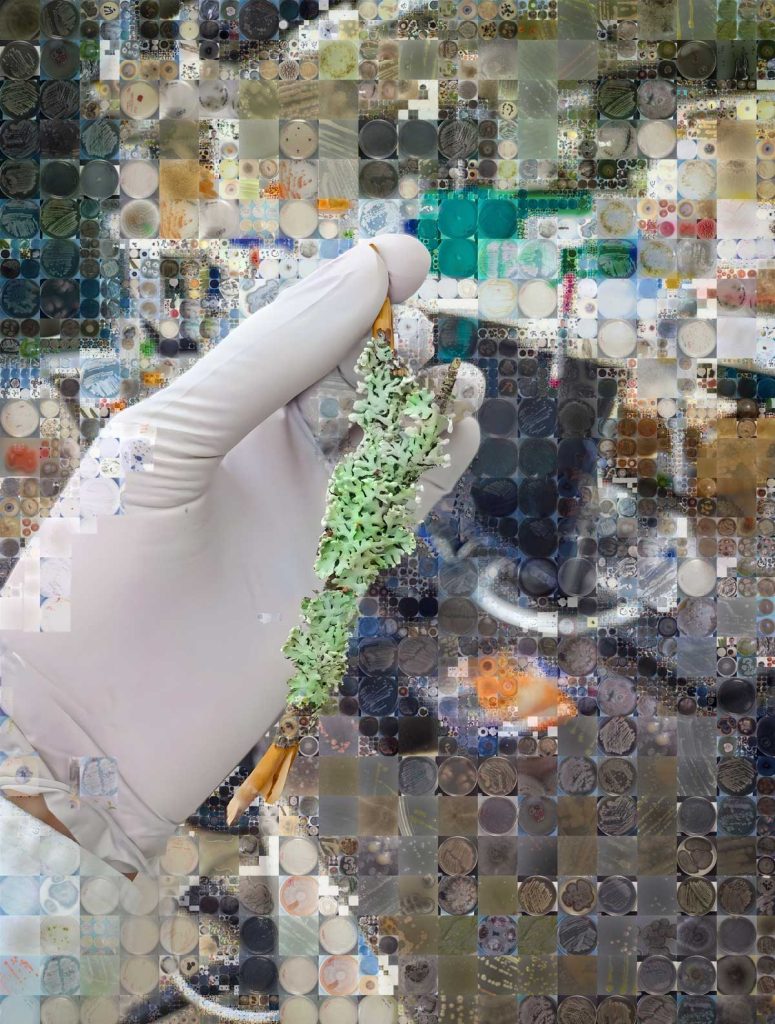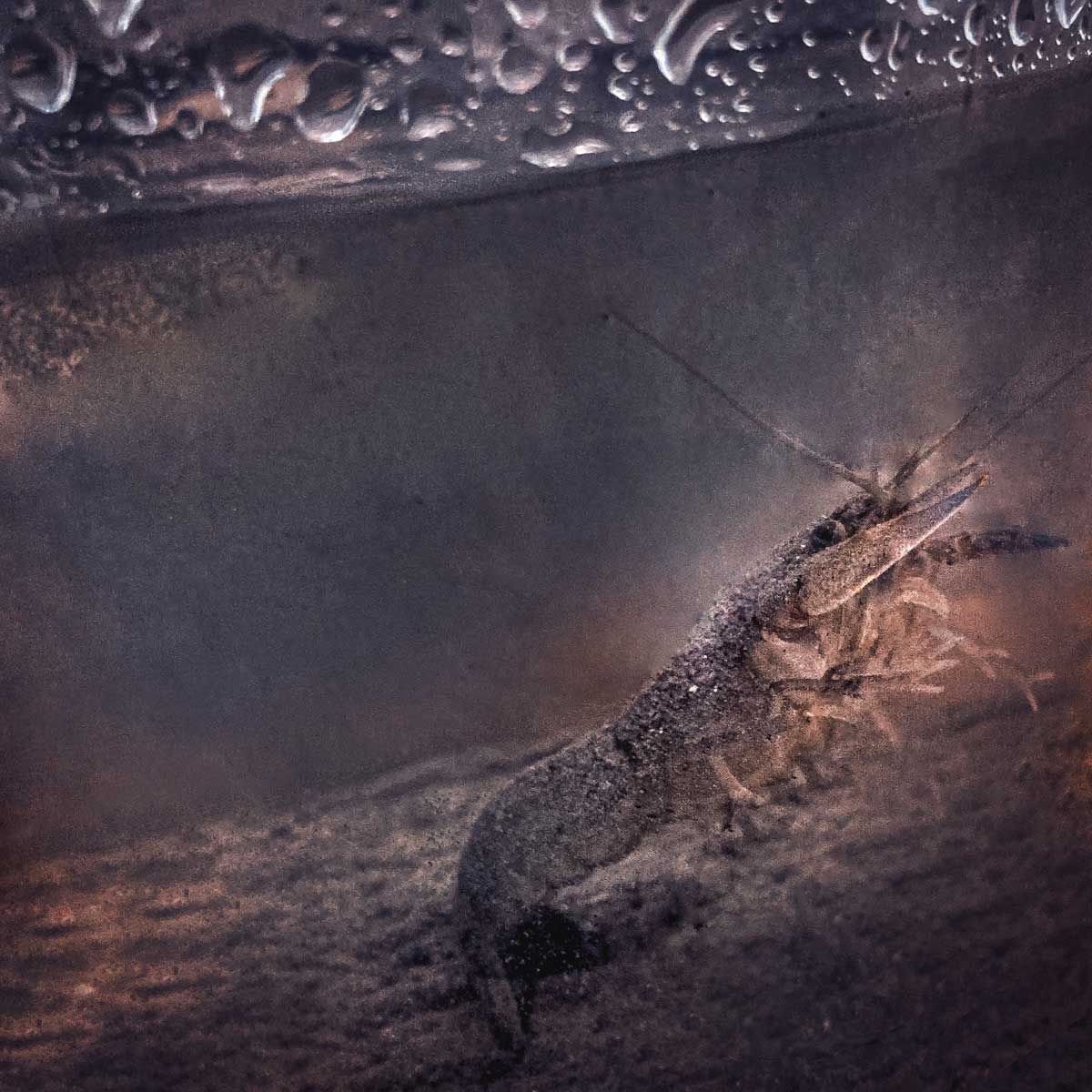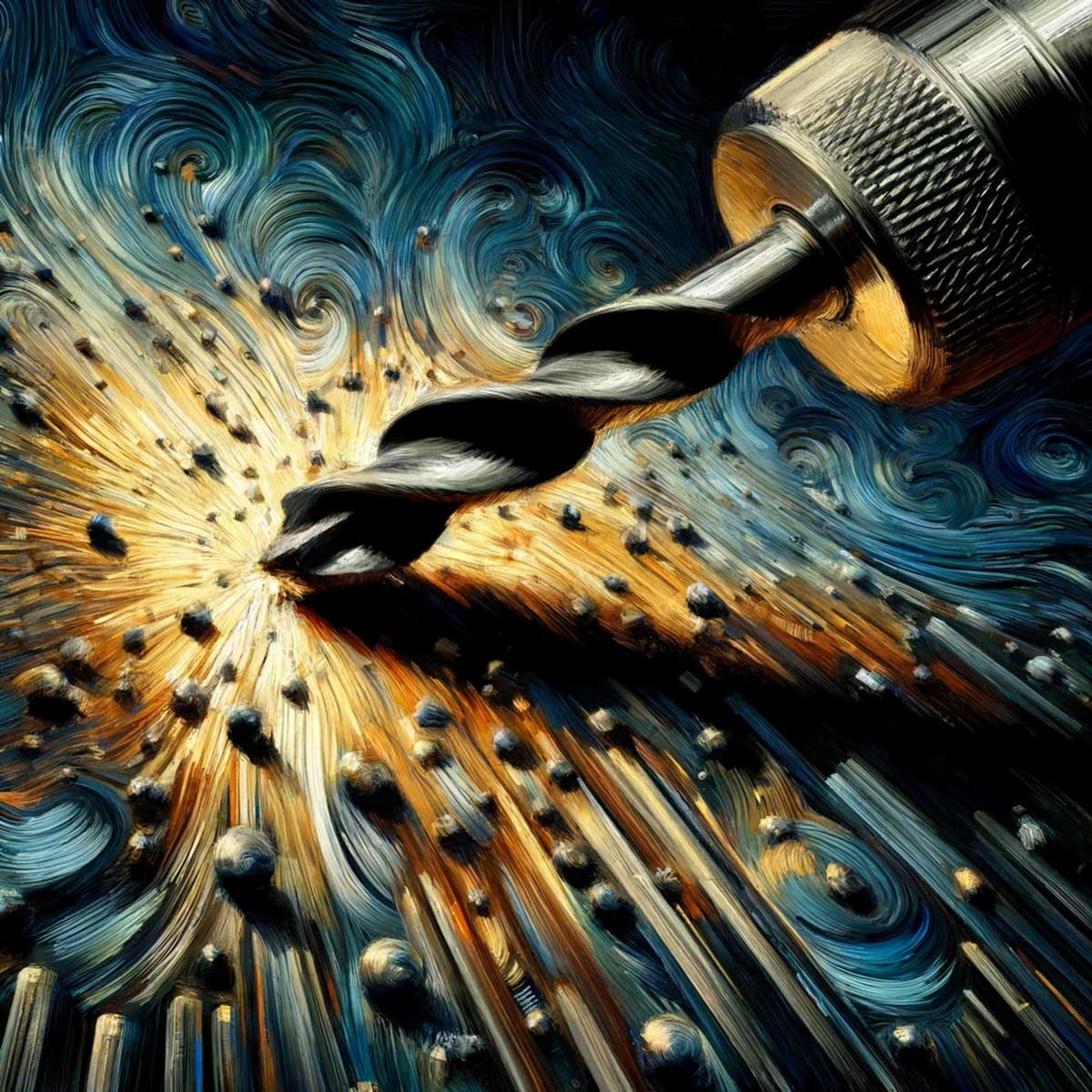On behalf of the University of Alberta Library and the Faculty of Graduate & Post Doctoral Studies, we are pleased to announce the winners of the 2024 Images of Research (IOR) competition.
It was a great year for submissions with 75 eligible entries. This was also the first year in the competition’s seven-year history that the use of AI generated images were accepted. Congratulations to all participants on their hard work. You can view all of the 2024 submissions through our IOR Virtual Exhibit.
First Place

Mosaic of Symbiosis, Mosaic of Life
Arseniy Belosokhov (he/they)
Science, Biological Sciences (Doctorate)
At a glance, this image is a snapshot of scientific discovery—a researcher holding a lichen. Look closer, and it transforms into a tapestry of petri dishes, each containing unique life forms, living together in a delicate balance, all derived from a single lichen. This piece is my ode to the beauty and intricacy of lichen communities, each one a microcosm of the interdependent networks that weave through our own society, inviting us to rethink our understanding of life’s interconnected nature.
Second Place

Decoding the Heart
Ishani DasGupta (she/her/hers)
Science, Computing Science (Doctorate)
The image portrays the synergistic relation between the two main aspects of my research – medical image analysis and coding strategies. I dynamically engage with both, symbolized by the reflections seen within the frames. The aim is to efficiently and accurately identify the left ventricle (LV) from 3D heart ultrasound (echocardiography) images.
By examining heart images, I am developing a machine learning (ML) assisted automated system that can efficiently and accurately locate the LV and analyze heart function. Working with cardiologists at the University Hospital, I strive to improve the efficiency of identifying heart diseases. I design, code, and train neural networks that continuously learn the principal features in these heart images. Once the trained ML model has generated its predicted outputs, I use medical imaging software to view, examine, and compare these ML outputs with the expert LV identification.
In my research, the fundamental interplay between these two domains is essential for advancing the understanding and capabilities of cardiovascular imaging.
Third Place

Swimming in Ash
Jenelle McCuaig (she/her/hers)
Science, Biological Sciences (Master’s)
Wildfires are drastically increasing in prevalence and severity worldwide, exacerbated by warmer and drier climates. Fires are considered to be a terrestrial issue, with landscapes burning, habitat destruction, loss of life, and poor air quality. While none of these effects should be dismissed, it is imperative to recognize that aquatic life is also at risk; water increases in temperature, and ash is deposited into the water, leaching contaminants (like metals and organic combustion products). My research investigates the effect of ash on the respiration and metabolism of aquatic invertebrates, using crustaceans as a model organism, to better understand how they may survive and cope with wildfires, aiding in global species conservation. This image from my research trip to Australia features a freshwater crayfish (species: Cherax destructor) swimming in Australian bushfire ash, with flecks of ash littering its back and it reaching to escape the contaminated water. The orange enhancements represent a reflection of the flame colour underwater. Water does not burn, but even aquatic organisms cannot escape the impact of fire.
People’s Choice

Metalic Fluidity: The Plastic Flow Key
Sofia Salazar
Engineering, Chemical & Materials Engineering (Master’s)
Friction Stir Welding is a unique process that joins metal plates in a dance of creation. Through the rotation of the main tool composed of the pin and the shoulder, it stirs two metal pieces together. This technique forges a bond without melting the base materials, making FSW a cold state welding process that allows the joining of aluminum material. This process unfolds a tapestry of physical phenomena—among them, friction capable of generating temperatures just high enough to plastically deform metal.
Despite extensive research, the intricate physics behind this innovative method retain their mysteries, eluding complete scientific understanding. This artwork encapsulates the beauty of Friction Stir Welding through a Van Gogh-inspired lens, where a luminous point marks the weld and is enveloped by concentric rings, echoing the signature circular isotherms characteristic of this process. The background, reminiscent of space, serves as a metaphor for the aerospace industry where FSW finds extensive application. It’s a visual symphony that celebrates the unseen artistry of metal joining, a convergence of science and art that transforms raw force into the most elegant metal union.
To learn more about how these images were created, please visit the each entrant’s submission page on our Virtual Exhibit.
Thank you to everyone who participated in and supported this year’s competition!
This content is licensed under a CC BY-NC-SA 4.0 Creative Commons licence.
